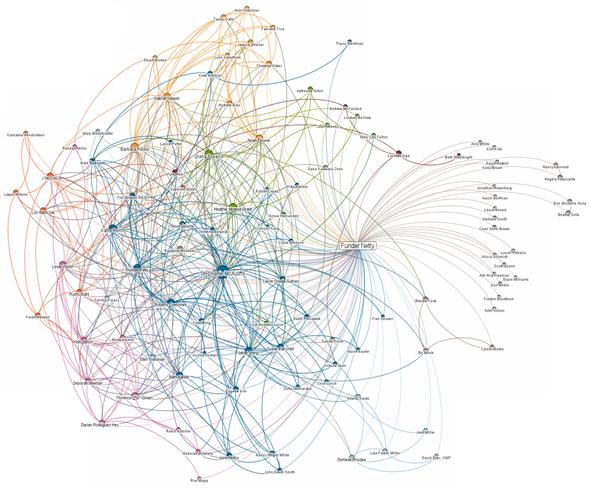
About two months ago I started to get emails with the subject line “so-and-so has endorsed you,” originating from LinkedIn “on behalf of” the person doing the endorsing.
At first I thought it was some kind of scam/spam. It’s legit, though, part of a new feature LinkedIn has introduced. Apparently the old “recommendations” took too long to fill out, and were too sparsely used, so this social networking site figured out a way to reduce the process of giving props to your colleagues to a couple of clicks and a few keystrokes.
Once I realized that people actually were “endorsing” me it made me uncomfortable in a number of dimensions. The first uncomfortable feeling was guilt. Most of these endorsements came from people I know and respect, and I feel a certain obligation to reciprocate. But, envisioning the cascade effect of all this mutual endorsing, it began to feel a bit like a chain letter, which triggered resentment. Is it impolite not to respond? Will breaking the chain trigger bad luck (or, at least, hard feelings?) Some of the endorsements came from people I don’t recognize, offhand. Should I remember them? (Cue guilt, again). Or are they just hoping to trigger a reciprocal endorsement, a pro forma “why thank you, you’re great, too.”
Ack. Digital social awkwardness.
Part of me wants to simply ignore this phenomenon. I make only limited use of LinkedIn to begin with. To me it’s the electronic version of exchanging business cards, with about as much meaning. I accept “invitations to connect” from people I know, but also from people I have never heard from as long as they work in a museum or have a job I think is interesting and potentially relevant to my work. I ignore a lot of random others (triggering guilt, again). When I originally signed up for the service I hoped it might help me help me find someone who knows someone who knows someone I am trying to get in touch with. But I quickly found out the sort of people I can’t get to through normal channels—Bill Gates, Steve Martin, Oprah—aren’t going to make themselves available via LinkedIn.
However, a recent conversation with Nik Honeysett, head of administration at the Getty Museum, made me realize I shouldn’t ignore this endors-o-rama. It is part of a broader trend that might disrupt traditional credentialing. Used to be, you backed up a job application with a resume and listed three references. The resume listed your alma maters, degrees, honors, and past employment. Now the soaring costs of education and high unemployment are combining to lower the ROI on traditional higher ed. At the same time, there is an explosion of high quality on-line content, some of it from the best universities in the country, and some offered with formal grading. Many companies are tinkering with various forms of microcredentialling, including digital badging, to enable learners to assemble a verifiable resume from bits and pieces of credible training and experience. As soon as employers start taking such self-assembled curricula seriously, the traditional system of higher ed is going to start unraveling (faster than it already is).
With “endorsements,” LinkedIn is trying to innovate around the other part of the traditional resume—the list of references. Much of the criticism I’ve seen online about the endorsements attacks the very ease that drives the system. People report that they have been endorsed for skills they don’t have by people they barely know. They snark that if people really have something to say about your work, they can take ten minutes to write a LinkedIn “recommendation” instead.
I think the snarkers are missing the point. “Endorsements” don’t replace LinkedIn recommendations; they are doing something else entirely, something kind of neat.
 |
| Image http://stephanie-mcauliffe.wikispaces.com/Photo+Gallery |
Endorsements document the breadth of your networks, general reputation, networking skills and (to some extent) your influence. LinkedIn suggests strategies for building up your endorsements—most simply, by asking, and by endorsing others. So what if you boosted your online credentials by asking people you know to click “endorse?” That measures something useful: how many people you know, who you can reach via social media, and your ability to mobilize that network. There are useful resources and skills that you can, in turn, put to the service of your employer.
What if you aren’t part of the “in crowd,” yet, and can’t demonstrate you already know folks in my inner circle? Maybe you can show you’ve mobilized endorsements from most everyone in your college class, instead—a not inconsiderable feat, one I couldn’t have pulled off as a new graduate.
So unless and until you intend to share a graphic of your Facebook network of friends on your resume, maybe “endorsements” are a good way to measure and report on the extent of your weak connections. Go forth & endorse…








